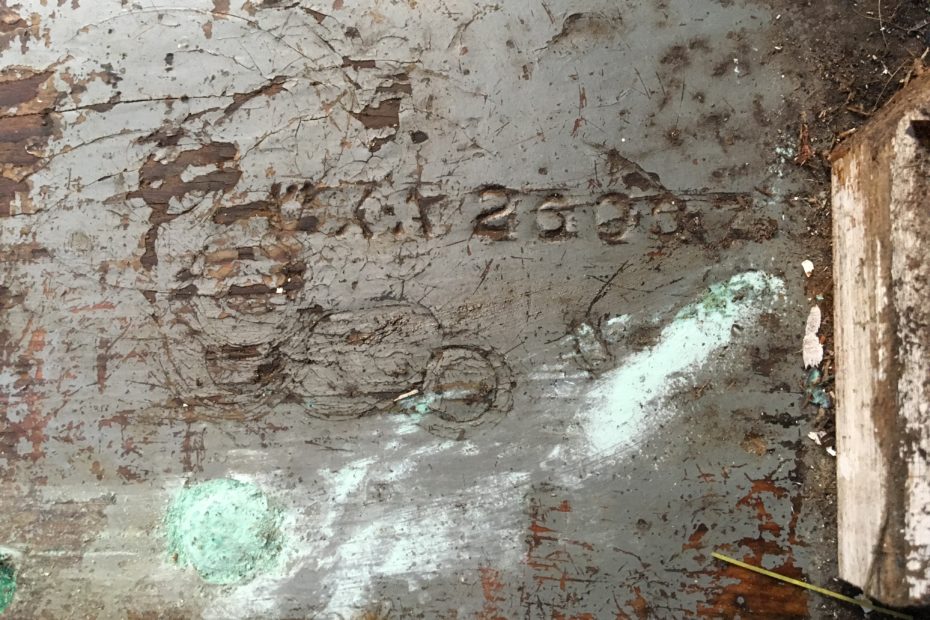Chris-Craft has been making boats since 1874. In WW2 they manufactured landing craft, LCVP (Landing Craft, Vehicle, Personnel), also called “Higgins Boats” after the inventor. These boats were designed to be quickly and economically built, were fast, had a shallow draft, and could carry soldiers as close to shore as possible. As a result, they were made out of plywood.
After the war, Chris-Craft began making plywood boat kits that became very popular. Noting this popularity, and needing a way to use the plywood surplus from the War, the company started making larger recreational boats for the burgeoning middle class, modifying the plans from the LCVP’s and scaling them up. Models like ours, the plywood Cavalier Futura, came out of that.
In the late 1960s, fibreglass started to become a popular boat building material and the era of wooden boats, plywood and planked, saw its decline.
Our boat, a 1969 26 foot, Chris-Craft Cavalier Futura, is the last generation of Chris-Craft plywood boats and was designed to last maybe 10 years. It’s pretty incredible that she’s lasted this long.
….
In my research about how to fix a plywood Chris-Craft, I discovered that Chris-Crafts have a hull ID number.
The Mariner’s Museum and Park in Newport News, Virginia, has the Chris-Craft Industries archives. The collection covers all models produced by Chris-Craft from 1922 through 1980.
Put these two things together, and what you have is the potential to find out the history of your Chris-Craft. Just find the hull number, send it to them, and, for a fee, they’ll send you information about your boat.
I found our hull ID stamped on the port side engine stringers, and contacted the museum with the number. We now have:
– Boat equipment record “Hull Card”
– sales literature
– original price sheet
– black and white production photographs
– engine information
– technical drawings
The plans say the side plank is 3/8″ OP-R/C 2, and the bottom plank is 1/2″ OP OB. I don’t know what OP-R/C 2, or OP OB is. We’re constantly amazed that this boat is made with such thin plywood. But, clearly it works, since she’s survived this long.
Our boat was built in Stratford, Ontario, and shipped to Thunderbird Marina in West Van in May 1968. We don’t know how many owners she’s had, but there were definitely 4: Grant, the guy we bought the boat from, the people he bought it from, us, and the original owners in 1968/1969.
Though we’re teasing some of her secrets out of her, she keeping most of them.
This is a good segue to tell you about her name. Stay tuned.

“Hull number” stamped into the stringer 
Original drawing of 26′ Futura 
Chris Craft Canadian price list for 1969 
Archival details from the hull number of our boat.

Hi, https://www.pitchandyaw.ca site is very useful for those who are passionate about boats, like me.
Also, I found where to download boat plans: https://bit.ly/StepbyStepBoatPlans I hope it will be useful!
Cheers! 🙂
Thanks for the link. Are you familiar with Tips from a Shipwright? https://www.youtube.com/user/TipsfromaShipWright Lou is a terrific resource.
Such a wonderful article. I have been into the boating for almost 15 years but during lockdown I wanted to build a boat by myself. Maybe it’s a sign to finally do it! Thank you for an inspiration!
Thanks for the nice comments. I hope you build your boat. It may take much longer than you expect, but it’s so rewarding. If you do it, be sure to take pictures and chronicle your progress, if for no one else but you. Looking back on what you’ve done will give you a real sense of accomplishment. All the best in your endeavors!